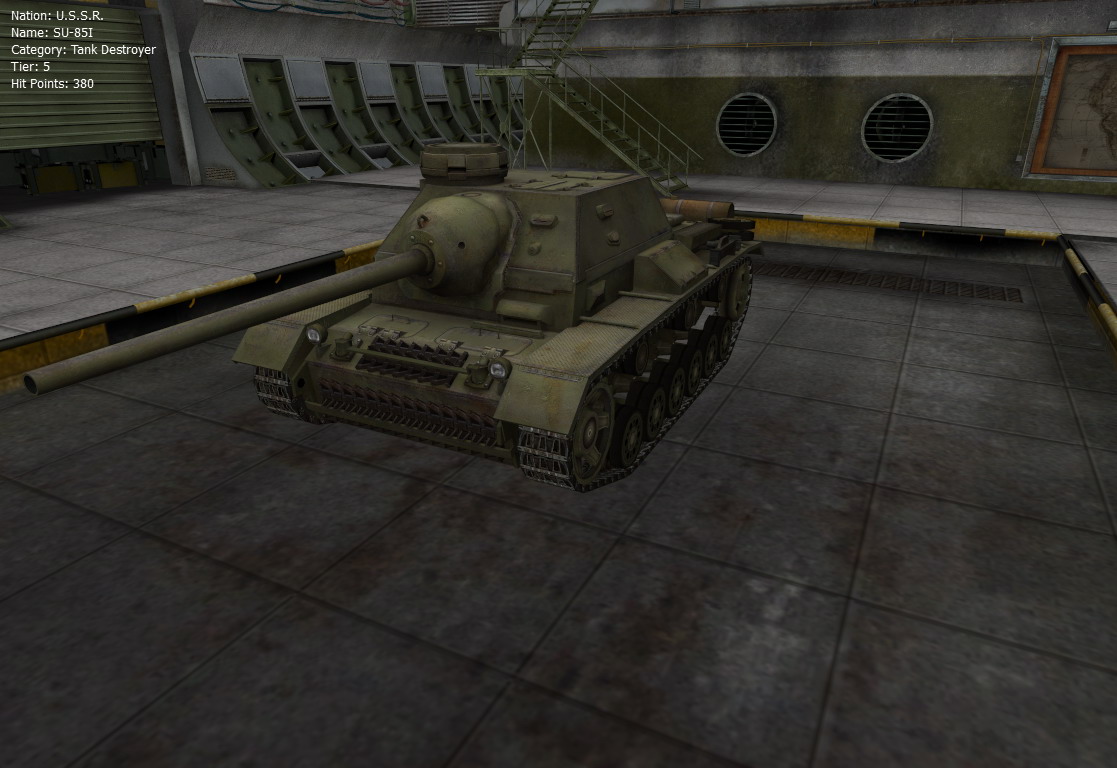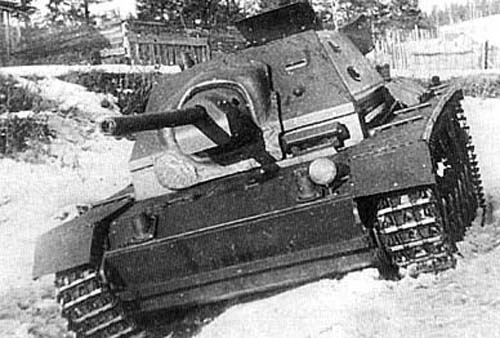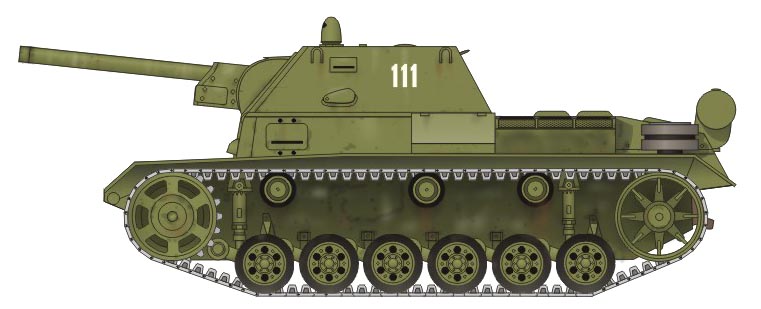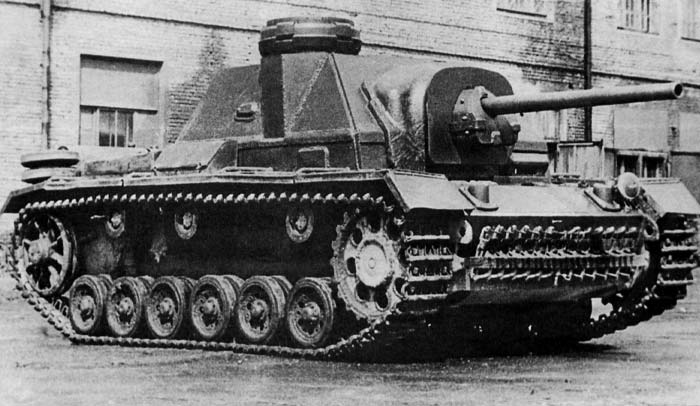Hello everyone,
as you might have noticed, Wargaming recently added the SU-76i vehicle into the 8.10 test for supertesters:
In addition, the game files contain one more vehicle, whose fate is not known, the SU-85i:
Today, we are going to have a look at both of them in a bit more detail than what is written in the wikipedia article.
History
In the second year of the war, the Russian army was still coping with numerous problems of its vehicles. Despite the fact they managed to overcome the initial disaster of 1941, the war was still far from won and the Red Army still lacked the massive amounts of armor they would later throw at the Germans in 1944 and 1945. Other types of armor were problematic, such as the mass-produced SU-76. SU-76 as a self-propelled gun had two major flaws. One was the fact it was open-topped and the crew was not well protected from behind, earning it the nickname of “golozhopy Ferdinand” (“Ferdinand with bare ass”). Another major problem was the fact it actually had two engines. These would often get desynchronized, damaging the engine and transmission in the process. This issue became so prevalent it required a general factory solution, that took several months (it was one of Ginzburg’s worst screwups), during which a shortage of SPG’s appeared on the front.
During this delay, the authorities (specifically the People’s Commissariat of Arms of the USSR (Народный комиссариат вооружения СССР or NKV), roughly an equivalent of the ministry of defense) turned their attention to captured vehicles, collected in various armor repair plants ever since the Fall of 1941. Most of these vehicles were the Panzer III tanks (called T-III by the Soviets) of various types, good medium tanks, quite popular amongst their German crews. One of the first ways to use this captured tech in 1942 was the proposal to install the 122mm D-30 gun on Panzer III chassis (designated SG-122(A)), but the gun proved to be too heavy and powerful for the suspension.
A year later, on 3.2.1942, the NKV issued an order to create a 76,2mm assault gun project on Panzer III chassis. This task was assigned to the construction bureau under the leadership of A.N.Kashtanov, who earlier proposed to re-arm the SG-122(A) SPG with a ZIS-3 gun. After its evacuation to Sverdlovsk, Plant No.37 (in cooperation with Plant No.592) was tasked with converting 200 Panzer III tanks into 76,2mm self-propelled guns. The deadline was murderous: the prototype was to be ready until 1st of March 1943. At this point, the SPG recieved a designation of SU-76(T-III). The 76mm gun was chosen out of necessity – by that time, the 85mm D-5 gun was still tested and anything bigger simply couldn’t fit on the Panzer III chassis. Furthermore, since the F-34 and ZIS-5 76mm guns could use the 76mm field howitzer ammunition, logistics were made much simplier by this choice.
In the end, the project – while resembling the earlier SG-122(A) – required some significant rework. The armored superstructure now recieved some slope for improved protection. The hull itself however remained pretty much unchanged from Panzer III. The vehicle was propelled by a 300hp 12-cylinder Maybach HL120 TRM with a Bosch 4 horsepower starter mini-engine. The vehicle had a mechanical Maybach SRG328145 transmission with semi-automatic hydraulic pre-selector. The suspension was identical to the original Panzer III one (Ausf.H and J – those were the most numerous ones in 1941 and 1942).
Four armored hatches were added to the engine compartment in order to improve the access to the engine. The armor was fairly light, designed to protect the vehicle only from low-caliber cannons, AT rifles and HE shell fragments. The frontal hull armor was only 30mm thick, the sides were 30mm thick too and the rear was 20mm thick. The superstructure consisted of several sheets of rolled armor and in total the front was 35mm thick, sides were 25mm thick, the roof and the back was 15mm thick. The upper plate was riveted to the rest of the superstructure with bolts. There were also portholes for submachine and pistol fire created in the side armor. The two-wing door for the crew was located at the back of the superstructure.
Compared to other Soviet SPG’s of the era, the SU-76(T-III) offered the crew good possibility to look out of it. The driver could either open a driver’s hatch to look out, or he could button up and use his periscope. Commander, loader and gunner could use the PTK-5 panoramatic devices to look out. These devices were installed in the sides and in the front plate of the superstructure and were protected by armored covers.
The first variant of the SPG counted on using the ZIS-3Sh gun (Sh = Shturmovaya, ZIS-3 assault gun variant) used in SU-76, or the F-22USV. It wasn’t a bad choice, but it had its flaws, including poor mantlet protection and crew compartment issues. Thus in the end it was decided to use even more reasonable gun, the S-1, developed from the F-34 gun. Its advantage was the fact the trunnion pin took less space in the superstructure, allowing for more crew comfort. The installation of the gun itself was not a problem, but the new proposed mantlet was quite complicated. In order to avoid it, a team of engineers from UKZM and Plant No.592 designed new cast mantlet in only 5 days. This new mantlet, combined with the mount now allowed the gun to depress to -5 degrees, elevate to 15 degrees and move 10 degrees to each side from the axis. The sights (TMFD-7) were taken from the ZIS-3 gun. The vehicle carried a full complement of 48 76mm shells, including AP, HE, subcaliber AP tracer (BR-354P), HEAT (BP-353A) and several types of shrapnel and buckshot rounds.
Although the original German Panzer III FUG5 radio was better than the Russian one, it was replaced with the 9R station in order to avoid signal confusion. But there were not enough radios to go around and only every third vehicle of the first series had them. The situation eventually improved in May-June 1943 and in the end almost every vehicle had one.
Testing and Production
Despite all the efforts, the design teams and plants could not keep up with the draconic schedules. On 15.2.1943, Simeon Ginzburg (director of the NKTP design bureau) reported that the prototype is being constructed, while in fact the workers began creating a prototype without the technical drawings and later, the designers in fact did make the technical drawings FROM the prototype by simply measuring it. In the end, the prototype was ready 5 days behind schedule (6.3.1943). The tests on the prototype began the very same day on proving grounds near Sverdlovsk in deep fresh snow and freezing weather (-35C), but despite the harsh conditions, the vehicle did well: it was almost as fast as medium tanks, sometimes even faster (50km/h). Operational range was shorter than expected, but this was not considered important. The worst that happened was that several teeth of one driving wheel broke off. The Maybach engine proved a bit troublesome in cold weather, needing to be heated before it would start. The gun however did not so well, reaching the rate of fire of only 5-6 rounds per minute (to compare, 75mm Panzer IV gun was considered to be able to reach 10 RPM and 50mm Panzer III gun 12 RPM). Overall however the tests were a success and a few days later (on 20.3.1943) the testing committee recommended the vehicle to enter service with the name of SU S-1. However, at that point it was commonly referred to as SU-76 S-1 or SU-76(i), as we know it today (here the “i” means “innostranaya” – “foreign”). At that point, it was decided to completely halt the production of SU-76 until the issue with the synchronisation could be fixed.
The conversion of captured tanks went fast and on 3rd of April 1943, first 5 SU-76(i) vehicles were transferred to a training SPG regiment near Sverdlovsk. Within a month, over 100 new tankists were taught how to handle these new vehicles – during this training, all vehicles went from 500 to 720 km each without any significant trouble. The second batch of 20 vehicles also went to training units and only in May 1943 the first SPG’s started to arrive to combat units. During the modernization in July 1943 (based on the experiences from the Battle of Kursk), the vehicle recieved a small blast shield on the gun, protecting the frontal part from shrapnels. At the same time, two external fuel tanks were installed on the back of each vehicle.
In August 1943, 20 SU-76(i) SPG’s were made as command vehicles with some sort of “high power radio” (probably FUG5), with commander’s copula from Panzer III installed on the top. These vehicles however did carry less ammo. The production continued until the end of November 1943, with 201 vehicles completed (cca 20-30 per month). In November 1943, the production was stopped for several reasons:
- in Summer 1943 the SU-76 breakdown problem was finally fixed and the SU-76 proved to be cheaper and more rugged in the end
- SU-76 did not rely on parts from captured tanks, which was a problem for SU-76i, as the Red Army encountered less and less Panzer III’s since 1942.
This is the part where the SU-85i comes in.
SU-85i program
There was only one program to modernize the SU-76i, started in Fall 1943. From the initiative of A.I.Kashtanov, a project was started to rearm the SU-76i with an 85mm gun. On 17.9.1943, chief designer of Plant No.37 recieved the following letter from the chief of technology department of NKTP by the name of Frezerov:
“The project developed by you to install the 85mm D-5S-85 gun on Panzer III chassis (SU-85i) cannot currently proceed due to the lack of enough 85mm D-5 guns and due to the question whether new Panzer III tanks will be delivered being unclear. I consider it appropriate to temporarily stop the aforementioned development and to save the developed material for further use in the future.”
This future never came in particular due to the shortage of Panzer III hulls and the fact it was no longer needed to convert German tech.
Combat use
In combat, the SU-76i SPG’s were used just like the regular SU-76′s, only the command tanks were replaced by the command variants of SU-76i. In Spring 1943 the vehicles were held in reserve, but no less than 50 SU-76(i) participated in the Battle of Kursk, 16 of which as a part of the 13th Army of Central Front. In the defensive battles, 8 were lost, 3 of which burned out completely. Later, during the assault on Orel in late July 1943, 16 more vehicles participated in the operations. About the same number of SU-76i was assigned to the Voronezh Front.
While the vehicles did not participate in the famous battle near Prokhorovka, almost all of the present SU-76i were destroyed days later in German counterattacks.
In September, SU-76i’s continued to fight in several brutal battles in South Russia and northern Ukraine – against well-dug enemies, AT-trenches and dogged defense of the Germans, these light vehicles (serving mostly as infantry support) did not last long. By October 1943, commanders of the SU-76i units reported their vehicles being mostly worn out and in dire need of refit. By November 1943, almost all the original SU-76i SPG’s were lost. Other units did not fare any better, SU-76(i)’s proved to be a stopgap measure. They served this role well however, filling the gap left behind the SU-76.
The Germans also noticed this “new” vehicle. They designated it Sturmgeschütz 76mm – they noticed it’s built around the Panzer III chassis, but overestimated the capabilities of the gun and the thickness of its armor. The vehicle was worse than the Germans feared. Ironically, several of these vehicles were seized by the Germans, who then used at least one in Fall of 1943 on the south part of the front. It is assumed the Germans had no problems with Panzer III spare parts, but more details about this “double captured tank” are not known. The Germans rated the SU-76i to be roughly equal in performance to a T-34 tank.
In the early Spring of 1944, these SPG’s as a whole were removed from the first line of service. The chief of GABTU Fedorenko ordered all “captured” SU-76i SPG’s removed from active service and transferred to training units, replacing them with SU-76M SPG vehicles. By that time, there were only around 10-15 SU-76i SPG’s left and some of them were used as training vehicles well until 1945. They were immediately scrapped afterwards, since they were all completely worn out and practically impossible to repair. One vehicle survived in Kubinka until 1968, but was probably scrapped afterwards.
Currently, there are two SU-76i vehicles in existence, both recovered as military wrecks (one was found on the bottom of the Sluch river). One is located as a part of a war memorial in Sarna, the other is in Moscow in a museum.
In World of Tanks
In World of Tanks, both vehicles can be regarded as interesting premium/reward tank destroyer choices. It is not known, when (or if at all) both vehicles will make it into the game, but there are speculations that the SU-76i might serve as some sort of reward tank for missions – or perhaps a promo tank. In game terms both vehicles aren’t anything “special”, but they do seem rather enjoyable, so I hope they will make it one day. SU-76i statistics can be seen here, SU-85i statistics here.
Source:
aviarmor.net
valka.cz
Pejčoch: Obrněná Technika






I want them!!
Yeah we really need another Soviet premium TD but I hope they are also hard at work preparing a German premium TD because as of now the selection is very limited for both countries. Unlike the US line which has had a number of premium TD for some time now.
I hope you can taste the sarcasm through your computer screen
I remember playing the su-85i on the test server when it was first introduced, as far as I can remember it was a fun tank, quite fast too.
yes, it was a good tank, but that MM on test server…. every battle was in max high tier
Cute but meh, give me the Sturmpanzer or better yet the Char 2c, i just love the steampunk look :)
I will buy both of them, cause i tested the SU-85i in 7.0 Test Server and it was good.
any idea how on to get them?
I’d take the SU-76i over the Marder 1 anyday. While the Marder 1 was good, i would rather trade some penetration power for better mobility.
Good reading. Very interesthing specialy the “double” captured part
From what I can tell the SU-76i will perform a bit like a cross between an SU-76 and a stock StuG III…so that means high camo, good mobility, lackluster armor and adequate gun performance (assuming it’s no higher than tier 4 – if that’s the same gun on the SU-76i as the 76 mm gun on the SU-76, then it won’t cut it on a tier 5 TD due to lack of penetration).
The Su-85i, by comparison, should perform a lot like the SU-85 or a fully-upgraded StuG III, and with all of the SU-76i’s strong points but with a better gun, and without the main disadvantage of the SU-85: its appallingly-short view range (I can’t tell you how annoyed I’ve gotten driving an SU-85 because of scouts refusing to do their jobs, or doing their jobs poorly and dying in the first minute of the game). Basically, the SU-85i will play almost exactly the same as a StuG III, so if you like that kind of TD it seems to be a nice choice.
The SU-85i is a very enjoyable tank for the few battles I have recently been able to play in it, 7 to be specific. Plays very much like a Stug with the 75, but the 85 doing more damage suffers in other areas like penetration, aim time, and accuracy.
Comparison of the two guns http://gyazo.com/eba85674337464fc5d2e4d3ad0f093f4.png
Wow I sure hope WG does not waste time on a US Premium TD and puts all it’s effort into getting these into the game faster. Lord knows there is a shortage of Soviet premium TDs :-/
Is there any chance the SU-76i could be the New Years award tank? Would be nice to get something besides a light tank for once.
Highly unlikely, we will probably recieve another tier 2 tank.